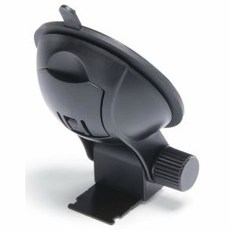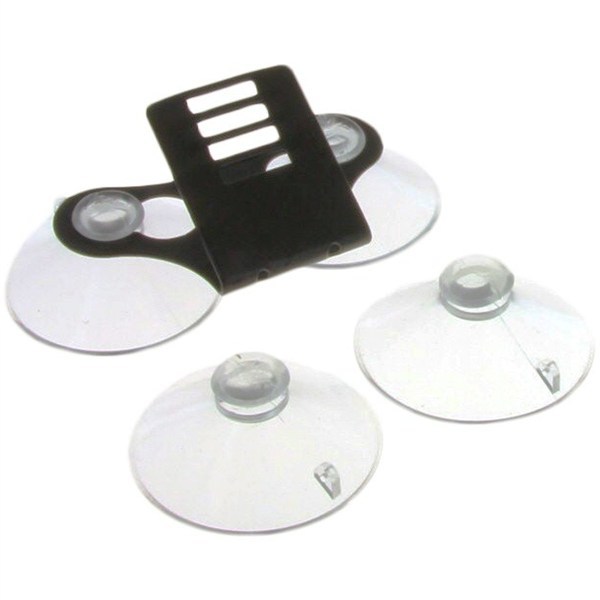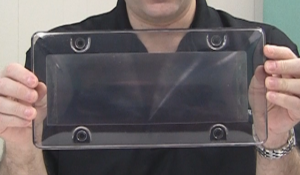 License plate frames can be a fun and creative way to decorate or customize your vehicle and add that personal touch. If you're searching for a solution to those pesky red light and speed cameras, an anti-photo license plate cover could be exactly what you need. However, before you pick out a frame or cover, check the local statutes in your area. There may or may not be some restrictions, depending on the laws in your state.
License plate frames can be a fun and creative way to decorate or customize your vehicle and add that personal touch. If you're searching for a solution to those pesky red light and speed cameras, an anti-photo license plate cover could be exactly what you need. However, before you pick out a frame or cover, check the local statutes in your area. There may or may not be some restrictions, depending on the laws in your state.
It is especially important to be mindful of the laws and regulations in each individual state governing license plates when traveling, as they can vary greatly from one state to the next. A license plate frame or cover allowed in your state may be restricted or even illegal in another. If you commute between two states or plan to take a cross-country trip, what was perfectly legal or permitted in your state could get you into trouble once you cross the state line.
The chart below lists US laws, statutes and regulations regarding the use of license plate covers, frames and shields by state.
Note: The information contained in this chart was based on information provided by Cruiser Accessories in 2020 and is made available for general informational purposes only. Please refer to the proper authority in your state for the most current and complete laws and regulations regarding the use of license plate covers and frames.
| License Plate Laws by State | ||||
|---|---|---|---|---|
| State | Plate Shields | Plate Frames | Visibility | Comments |
| Alabama | Yes | Yes | Must be visible at all times | "Alabama" must be clearly visible at top of plate |
| Alaska | Yes | Yes | Must be visible at all times | |
| Arizona | Yes | Yes | Must be clearly legible and visible | "Arizona" must be clearly visible at top of plate |
| Arkansas | Yes | Yes | Must be clearly legible | Covers that make the license plate difficult to read or reduces its reflective properties are prohibited |
| California | NO | Yes | Must be clearly visible | Red light/speed camera license plate covers are also prohibited |
| Colorado | Clear only | Yes | Must be clearly visible | Covers that shield or impair the reading of a license plate by devices are also prohibited |
| Connecticut | Yes | Yes | Must be visible | Covers cannot obscure or impair visibility |
| Delaware | Clear only | Yes | Must be clearly readable | Red light/speed camera license plate covers, shields, sprays, etc. are also prohibited |
| District of Columbia | NO | Yes | clearly and distinct | Identification tags must be clearly legible |
| Florida | Yes | Yes | Must be visible at all times | Red light/speed camera license plate covers, shields, sprays, etc. are prohibited |
| Georgia | Clear only | Yes | Must be plainly visible | Red light/speed camera license plate covers, shields, sprays, etc. are prohibited |
| Hawaii | Yes | Yes | Must be visible at all times | Plates must be unobscured at all times |
| Idaho | Yes | Yes | Must be free of foreign materials and visible at all times | Plates must be clearly visible and legible |
| Illinois | NO | Yes | Must be clearly visible | anti red light/speed camera license plate covers, shields, sprays, devices, etc. are prohibited |
| Indiana | Yes | Yes | Must be clearly visible | Plates must be free of foreign materials |
| Iowa | Yes | Yes | Permit full view of numbers and letters | Frames must permit full view of all numbers and letters on registration plate |
| Kansas | NO | Yes | Must be clearly legible | license plate covers, shields, sprays, etc. are prohibited |
| Kentucky | Yes | Yes | Must be clearly visible | Frames and covers must permit full view of all numbers and letters on plate |
| Louisiana | Yes | Yes | Must be clearly visible | Plates must be free of foreign materials |
| Maine | Yes | Yes | Must be clearly visible | Plates, letters and numbers must be clearly visible at all times |
| Maryland | NO | Yes | Must be clearly visible | No tinted, colored, painted, marked, clear or illuminated object designed to distort the characters on a license plate is allowed. Plate covers may not even be advertised or offered for sale. |
| Massachusetts | NO | Yes | Must be displayed conspicuously | license plate covers, shields, etc. are prohibited |
| Michigan | Yes | Yes | Must be clearly visible | Plates must be free of foreign materials |
| Minnesota | NO | Yes | Must be plainly visible | No clear or colorless material that affects plated visibility or reflectivity is allowed |
| Mississippi | Yes | Yes | Must be clearly visible | Plates, letters and numbers must not be covered by any object, marking, paint, etc. |
| Missouri | Yes | Yes | Must be clearly visible | Covers may not impair reflective qualities of plate |
| Montana | Yes | Yes | Must be obviously visible | "Montana" and border outline of state must be clearly visible |
| Nebraska | Yes | Yes | Must be visible | All letters, numbers, etc. on plates must be free from grease dust and other blurring matter |
| Nevada | Yes | Yes | Readable from 100 ft. | Plates must be clearly legible and free from foreign material |
| New Hampshire | Yes | Yes | Displayed conspicuously | Plates must be clean and not be obscured |
| New Jersey | Yes | Yes | Displayed conspicuously | sale or use of anti red light/speed camera license plate covers, shields, sprays, devices, etc. are prohibited |
| New Mexico | Yes | Yes | Clearly visible | Plates must be clearly legible and free from foreign material |
| New York | NO | Yes | Must be visible | sale or use of anti red light/speed camera license plate covers, shields, substances, etc. are prohibited |
| North Carolina | Yes | Yes | Plainly readable from 100 ft. | No clear or colorless material that affects plate visibility or legibility is allowed |
| North Dakota | Yes | Yes | Clearly visible | Plates must be clearly visible and letters and numbers must not be obscured |
| Ohio | Yes | Yes | Clearly visible | Plates must be not be covered by any material that obstructs visibility |
| Oklahoma | NO | NO | Must be clearly visible | No plate frame, cover or material is allowed |
| Oregon | NO | Yes | Plain view and easily read | Any frame or plate holder that alters the plate or makes the numbers, letters or regtistration stickers difficult to read or unreadable is prohibited |
| Pennsylvania | NO | Yes | Must be visible at all times | Red light/speed camera license plate covers, shields, sprays, etc. are prohibited |
| Puerto Rico | Yes | Yes | Clearly visible | Plates must be not be covered by any material that obstructs visibility |
| Rhode Island | Yes | Yes | Clearly visible | Plainly readable from 100 ft. |
| South Carolina | No | Yes | Must be visible at all times | No tinted covers allowed |
| South Dakota | Yes | Yes | Clearly visible | Plates must be clearly visible and letters and numbers must not be obscured |
| Tennessee | No | Yes | Clearly visible | No tinted covers allowed and plates must be clearly visible with no foreign materials |
| Texas | Yes | Yes | No reflective matter or blurring of the plate and plates must be free of foreign material and clearly legible | |
| Utah | Yes | Yes | Clearly visible | Plates must be free of foreign material and clearly visible |
| Vermont | No | Yes | Plainly legible | No tinted covers allowed and plates must be plainly legible at all times |
| Virginia | Yes | Yes | Clearly visible and legible | No colored frame or covers allowed and plates must be clearly visible and legible |
| Washington | Yes | Yes | Must be visible at all times | Unlawful to use frames or covers that change, alter or obscure any portion of the plate or make it illegible |
| West Virginia | Yes | Yes | Clearly legible | Plates must be free of foreign materials and clearly legible |
| Wisconsin | Yes | Yes | Clearly legible | Plates must be at all times be maintained in a legible condition |
| Wyoming | Yes | Yes | Clearly legible | Plates must be free of foreign materials and clearly legible |
The information in the chart above is a basic overview and is provided courtesy of Cruiser Accessories. For the full chart, download their State License Plate Laws - 2020.
Comments, questions? Leave a comment below. If you're shopping for camera defense solutions or license plate frames and need assistance, contact us and we'll be happy to help!

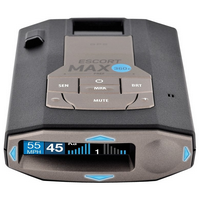
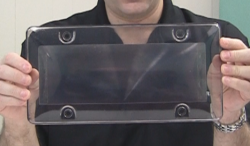
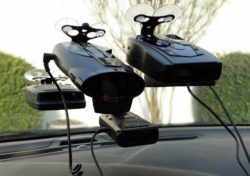
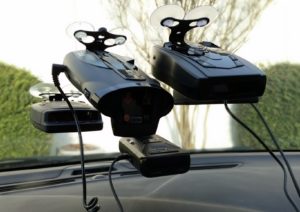 You recently received a ticket and after the initial shock, decided to take action to prevent it from happening ever again. So, you purchased a
You recently received a ticket and after the initial shock, decided to take action to prevent it from happening ever again. So, you purchased a 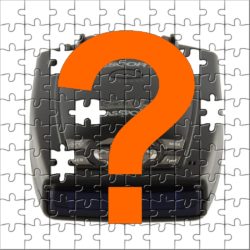
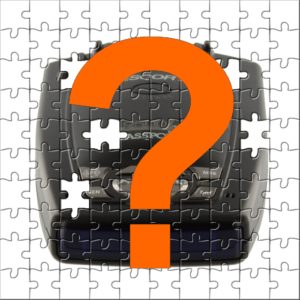 So, you want to
So, you want to 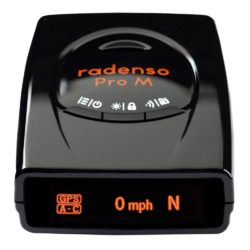
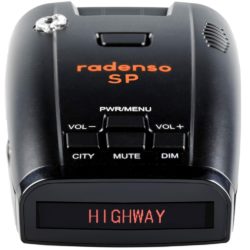
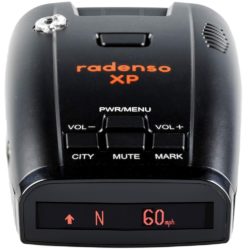
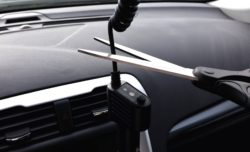
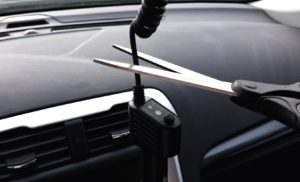 The age of mobility brought about the concept of cord cutting, and manufacturers of
The age of mobility brought about the concept of cord cutting, and manufacturers of 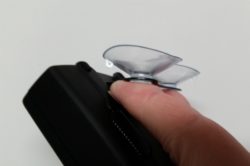
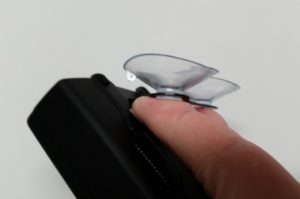 It's the universal question, discussed frequently in forums and social media groups, and is usually the first concern after someone purchases one to install in a vehicle for the first time. Where is the best place to mount a
It's the universal question, discussed frequently in forums and social media groups, and is usually the first concern after someone purchases one to install in a vehicle for the first time. Where is the best place to mount a 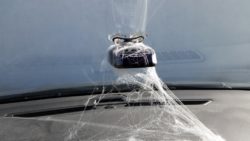
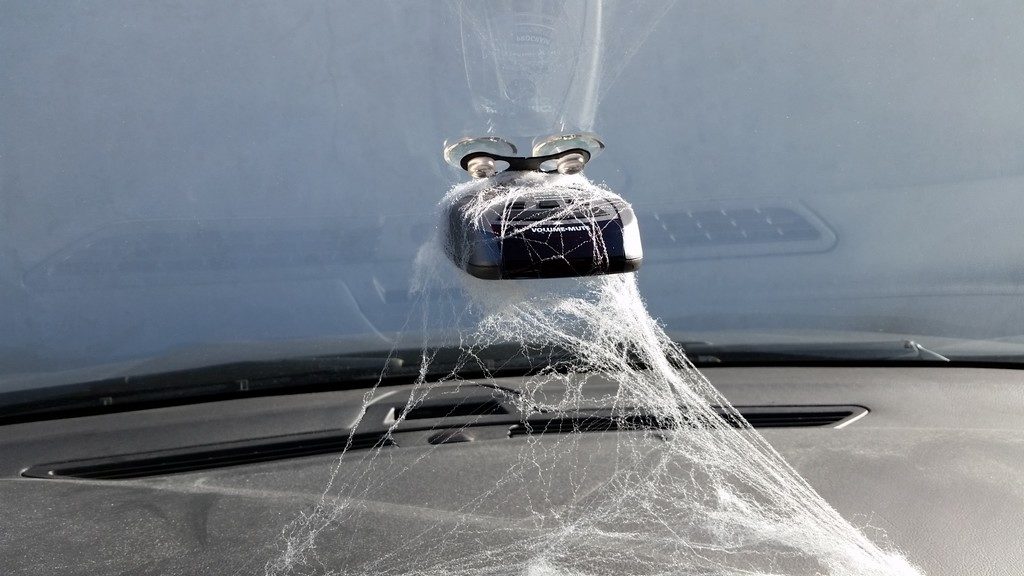 Recently we came across an article on
Recently we came across an article on 
